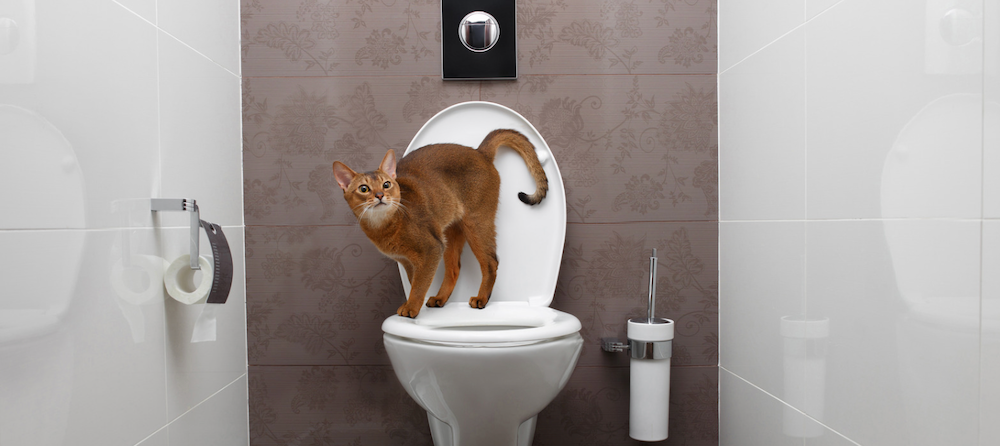The Risks of Flushing Cat Poop in Your Toilet - Precautionary Measures
The Risks of Flushing Cat Poop in Your Toilet - Precautionary Measures
Blog Article
Listed here down the page you can discover more professional answers pertaining to Don’t flush cat feces down the toilet.

Intro
As feline proprietors, it's necessary to be mindful of how we throw away our feline pals' waste. While it may appear practical to purge cat poop down the commode, this method can have harmful consequences for both the atmosphere and human health and wellness.
Ecological Impact
Purging cat poop introduces hazardous microorganisms and bloodsuckers into the water, posing a significant risk to water ecological communities. These impurities can adversely influence aquatic life and concession water high quality.
Health and wellness Risks
In addition to environmental problems, flushing pet cat waste can likewise position health threats to human beings. Feline feces may contain Toxoplasma gondii, a parasite that can cause toxoplasmosis-- a potentially severe ailment, especially for expectant females and people with weakened body immune systems.
Alternatives to Flushing
Thankfully, there are more secure and much more liable ways to dispose of feline poop. Take into consideration the complying with choices:
1. Scoop and Dispose in Trash
The most usual method of disposing of feline poop is to scoop it right into a biodegradable bag and throw it in the garbage. Be sure to utilize a specialized clutter scoop and get rid of the waste without delay.
2. Use Biodegradable Litter
Choose naturally degradable feline trash made from products such as corn or wheat. These clutters are eco-friendly and can be securely dealt with in the trash.
3. Bury in the Yard
If you have a yard, consider hiding pet cat waste in a marked location away from vegetable gardens and water sources. Make certain to dig deep adequate to stop contamination of groundwater.
4. Set Up a Pet Waste Disposal System
Invest in a pet garbage disposal system especially developed for cat waste. These systems make use of enzymes to break down the waste, minimizing odor and ecological impact.
Verdict
Accountable pet possession prolongs beyond supplying food and sanctuary-- it also involves appropriate waste administration. By avoiding flushing pet cat poop down the toilet and going with alternative disposal approaches, we can decrease our ecological impact and secure human wellness.
Why Can’t I Flush Cat Poop?
It Spreads a Parasite
Cats are frequently infected with a parasite called toxoplasma gondii. The parasite causes an infection called toxoplasmosis. It is usually harmless to cats. The parasite only uses cat poop as a host for its eggs. Otherwise, the cat’s immune system usually keeps the infection at low enough levels to maintain its own health. But it does not stop the develop of eggs. These eggs are tiny and surprisingly tough. They may survive for a year before they begin to grow. But that’s the problem.
Our wastewater system is not designed to deal with toxoplasmosis eggs. Instead, most eggs will flush from your toilet into sewers and wastewater management plants. After the sewage is treated for many other harmful things in it, it is typically released into local rivers, lakes, or oceans. Here, the toxoplasmosis eggs can find new hosts, including starfish, crabs, otters, and many other wildlife. For many, this is a significant risk to their health. Toxoplasmosis can also end up infecting water sources that are important for agriculture, which means our deer, pigs, and sheep can get infected too.
Is There Risk to Humans?
There can be a risk to human life from flushing cat poop down the toilet. If you do so, the parasites from your cat’s poop can end up in shellfish, game animals, or livestock. If this meat is then served raw or undercooked, the people who eat it can get sick.
In fact, according to the CDC, 40 million people in the United States are infected with toxoplasma gondii. They get it from exposure to infected seafood, or from some kind of cat poop contamination, like drinking from a stream that is contaminated or touching anything that has come into contact with cat poop. That includes just cleaning a cat litter box.
Most people who get infected with these parasites will not develop any symptoms. However, for pregnant women or for those with compromised immune systems, the parasite can cause severe health problems.
How to Handle Cat Poop
The best way to handle cat poop is actually to clean the box more often. The eggs that the parasite sheds will not become active until one to five days after the cat poops. That means that if you clean daily, you’re much less likely to come into direct contact with infectious eggs.
That said, always dispose of cat poop in the garbage and not down the toilet. Wash your hands before and after you clean the litter box, and bring the bag of poop right outside to your garbage bins.
https://trenchlesssolutionsusa.com/why-cant-i-flush-cat-poop/

I stumbled upon that post about Don’t flush cat feces down the toilet while surfing the web. Kindly take the time to distribute this blog post if you enjoyed reading it. I recognize the value of reading our article about Can You Flush Cat Poo or Litter Down the Toilet?.
Request An Appointment Report this page